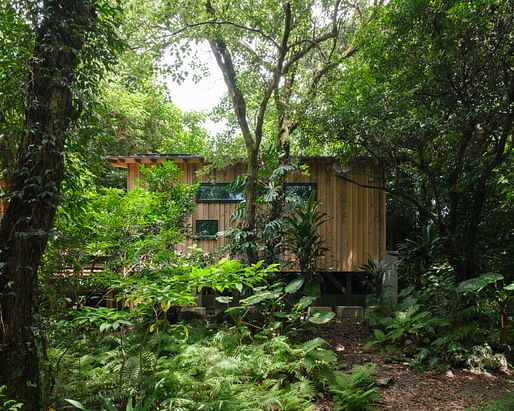
Japanese regenerative architectural design studio tono Inc. has designed a sustainable residence noted for its positive impact on the surrounding environment.
Located on the southern Japanese island of Yakushima, Sumu Yakushima applies regenerative architecture to reconceptualize the relationship between human habitation and the natural environment.
The project’s design takes a holistic view of the surrounding river basin, mountains, and sea. It combines traditional Japanese civil engineering with contemporary technology.
The key aims of the design included designing the underground environment, orienting buildings based on a thorough understanding of water and air flows through the landscape, and creating an ongoing connection with nature through architecture.
Sumu Yakushima consists of several separate buildings that are organized in a layout that respects the pre-existing natural landscape.
The buildings protect the tree roots and reduce the impact of the wind. Stones were added to supply minerals to the soil and foster tree growth. Tree roots passing under the buildings support the soil, as well.

Additionally, burned wood was placed under the foundations along with other carbonized surfaces to promote the growth of mycelium. The buildings, thus, connect and support the soil network. The buildings and decks are also raised, which allows wind to pass through, promoting adequate ventilation.
The residence utilizes 100% off-grid energy from solar power, storage batteries, and local firewood, while providing a comfortable living space with modern design.
Image: Rui Nishi
An off-grid kitchen made with local cedar features a solar-powered radiant heat cooker. It draws water from the nearby river basin and then cleans and returns it after use.
Naturally-sourced persimmon tannin was applied to the wooden structures near the soil to prevent erosion by insects. And, plaster made from a mix of hemp charcoal and effective microorganism bacteria prevents mold and other bacteria.
The architects hope this unique design approach has the potential to accelerate environmental initiatives.
No Comments
Block this user
Are you sure you want to block this user and hide all related comments throughout the site?
Archinect
This is your first comment on Archinect. Your comment will be visible once approved.